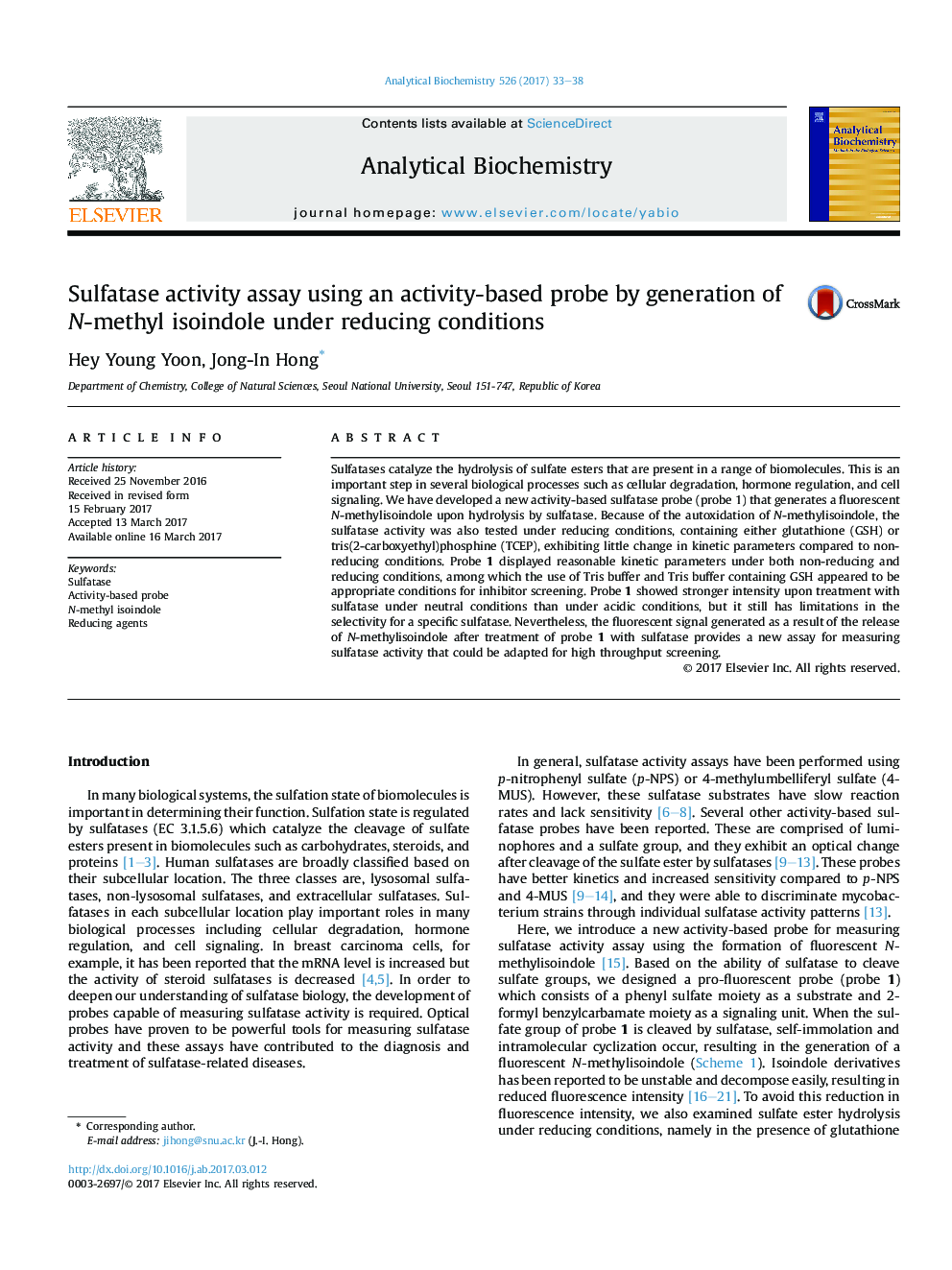| Article ID | Journal | Published Year | Pages | File Type |
|---|---|---|---|---|
| 5131617 | Analytical Biochemistry | 2017 | 6 Pages |
Sulfatases catalyze the hydrolysis of sulfate esters that are present in a range of biomolecules. This is an important step in several biological processes such as cellular degradation, hormone regulation, and cell signaling. We have developed a new activity-based sulfatase probe (probe 1) that generates a fluorescent N-methylisoindole upon hydrolysis by sulfatase. Because of the autoxidation of N-methylisoindole, the sulfatase activity was also tested under reducing conditions, containing either glutathione (GSH) or tris(2-carboxyethyl)phosphine (TCEP), exhibiting little change in kinetic parameters compared to non-reducing conditions. Probe 1 displayed reasonable kinetic parameters under both non-reducing and reducing conditions, among which the use of Tris buffer and Tris buffer containing GSH appeared to be appropriate conditions for inhibitor screening. Probe 1 showed stronger intensity upon treatment with sulfatase under neutral conditions than under acidic conditions, but it still has limitations in the selectivity for a specific sulfatase. Nevertheless, the fluorescent signal generated as a result of the release of N-methylisoindole after treatment of probe 1 with sulfatase provides a new assay for measuring sulfatase activity that could be adapted for high throughput screening.
